Getting to know ants
The ant is a very common type of insect in Quebec. What makes it harmful is mainly the fact that it lives in large colonies. Because of its small size, it is very easy for ants to break into a home and establish a new colony or to obtain supplies to meet its food needs.
Issue
Because of the large number of individuals in a single colony, getting rid of the ants that have established themselves in your home can be complex. Over-the-counter household products are not always suitable for the type of ant you are experiencing, as there are several subspecies and therefore several types of intervention. These products can also harm you, your pets and even the environment if not used properly.
Our solutions
It is better to use the services of a professional in pest management such as Brisebois Extermination to put an end to an ant invasion in an efficient and durable manner. The types of ants we most often encounter are the carpenter ant, the pharaoh ant and the cobblestone ant.
CARPENTER ANT
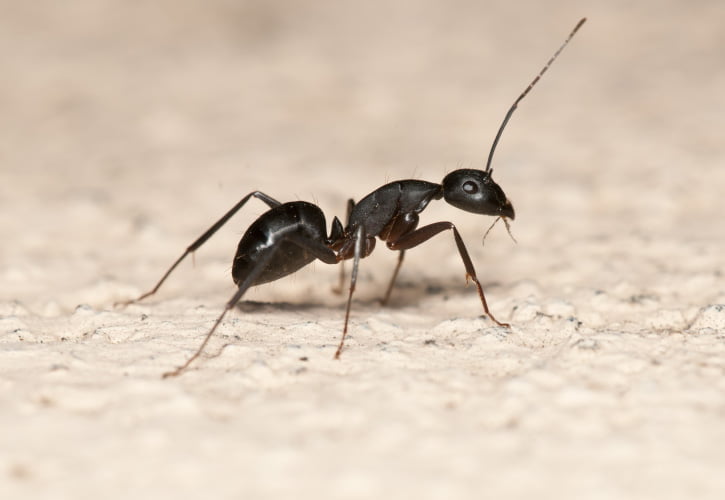
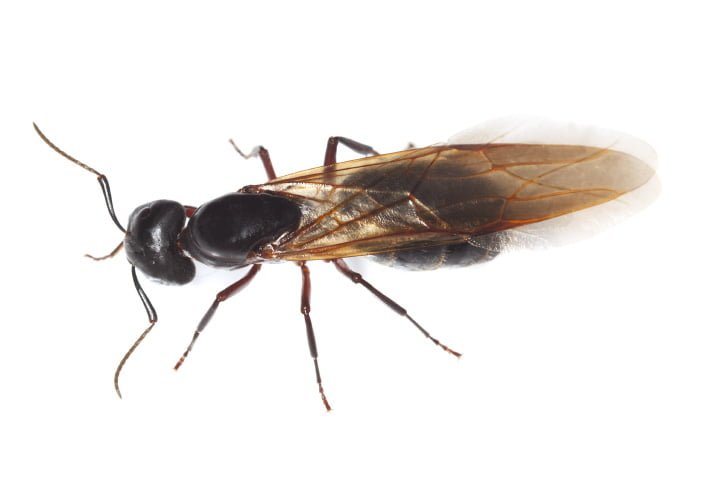
Recognizing a carpenter ant
The carpenter ant is easy to recognize, since it is larger than other species, from 6 to 25 mm, depending on whether it is a worker or a queen. This type of ant is usually black.
Behavior
It is sometimes called the wood-destroying ant because colonies are found in damp or decaying wood, such as stumps, firewood, fences, beams, planks, etc., as well as in some softwood species such as pine. Its presence is often a sign of moisture or water infiltration and it can severely damage a structure, resulting in costly repairs.
Contrary to popular belief, the carpenter ant does not feed on wood, in fact it rejects it from its galleries in the form of fine sawdust. Instead, it prefers plant material containing fats, sugars and proteins, as well as some animal material, such as aphids and their honeydew.
The carpenter ant lives in large colonies with up to ten satellite colonies. Thus, the infestation of a home is often a satellite nest with the mother colony outside.
Other features
The carpenter ant is more active at night. Although it has an annual reproductive cycle, this species has a long lifespan, about seven years for the workers and up to 25 years for a queen.
FOURMI PHARAON
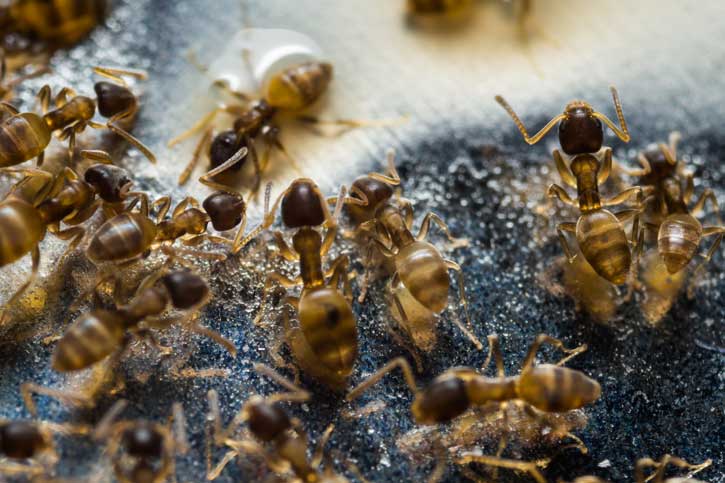
Appearance
The pharaoh ant is very small, 1.5 to 2 mm, and pale yellow to brown in color. This type of ant often goes unnoticed and is very difficult to control.
Behavior
Like most ants, the pharaoh ant moves in single file. Since it comes from tropical climates, in North America, it always settles in heated buildings and does not really build an ant hill.
There are several queens per colony and a queen lives for about 200 days, during which she can lay up to 400 eggs. A colony can therefore grow rapidly and overpopulation often leads to the splitting of the colony into satellite nests.
Thanks to its small size, the pharaoh ant can settle in places as unusual as between books or sheets, but also in electrical outlets or in the gaps inside walls. It can therefore quickly damage a structure.
Other features
The pharaoh ant feeds on sweet, fatty and protein-rich foods. It also hunts small insects and eats dead animals and organic waste. Although it does not sting, the pharaoh ant can transmit diseases such as salmonella and staphylococcus.
COBBLESTONE ANT
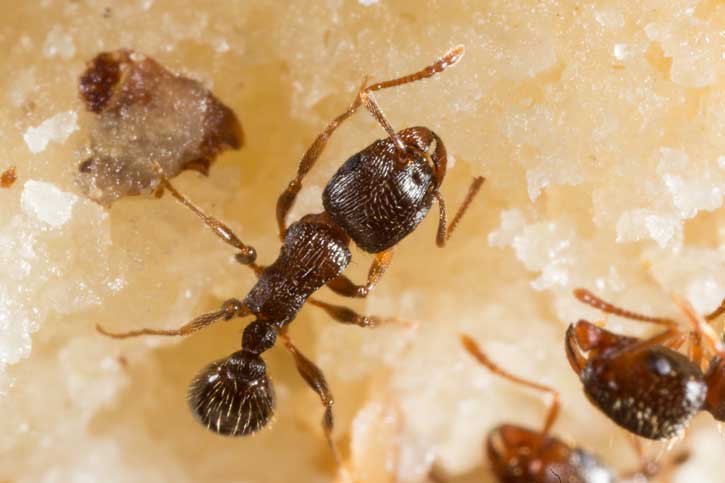
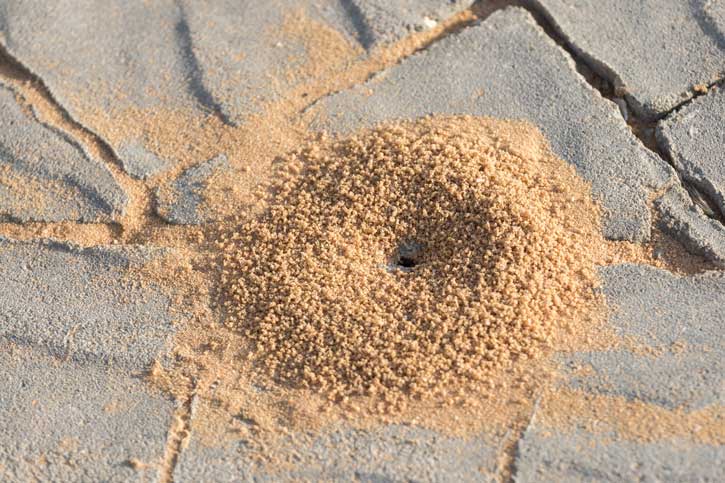
Appearance
Also known as the field ant, the cobblestone ant is brown or black and small in size, 2.5 to 3 mm. Its nest is easy to recognize, as it is often marked with a small mound on sandy ground, paving stones, concrete slabs or an asphalt parking space. It is also found under stones, wood and mulch.
Behavior
Since the pavement ant prefers sandy environments, it is found more outdoors, but near buildings. However, it can be found indoors in winter, looking for warmth.
This ant is constantly looking for food. It eats fatty substances, seeds, aphid honeydew, other insects and its own waste. It can therefore easily get into your home to feed in the pantry, the trash can or even the pet bowls.
Other features
It is one of the most common species. Hot and humid temperatures favor its multiplication and the galleries it digs can sometimes cause land subsidence.
